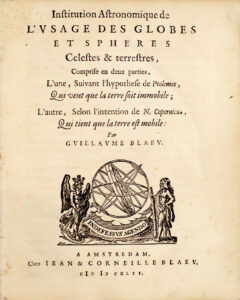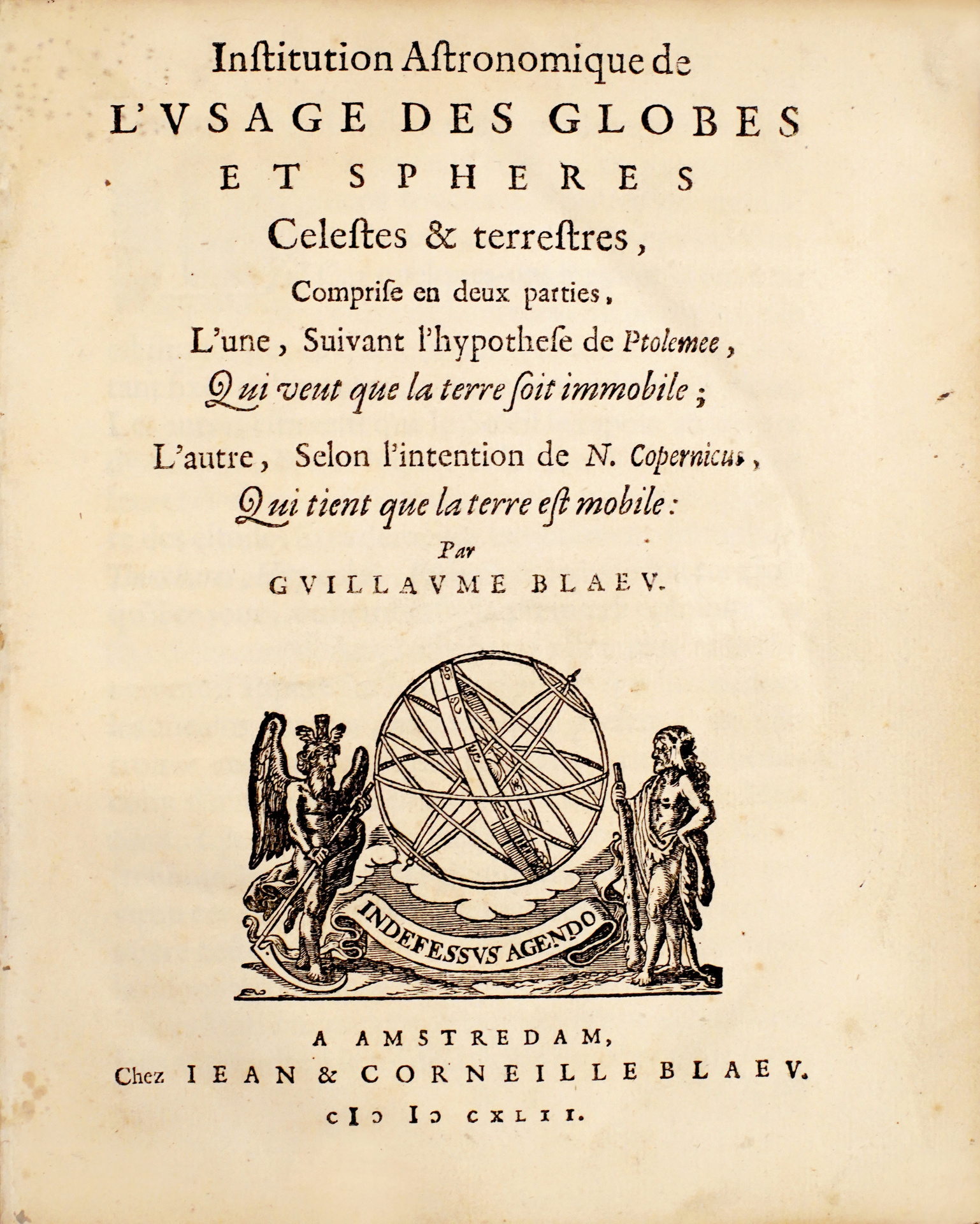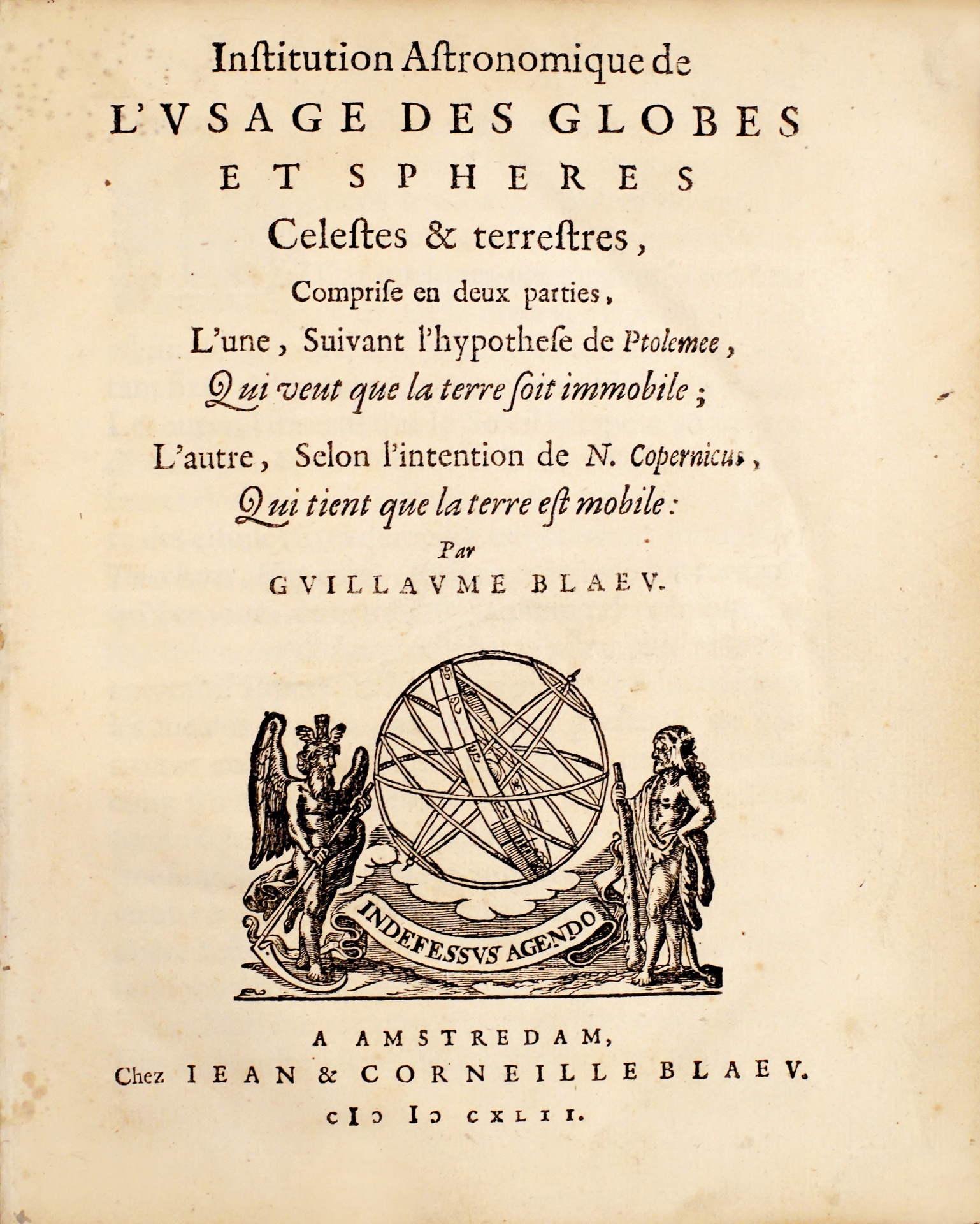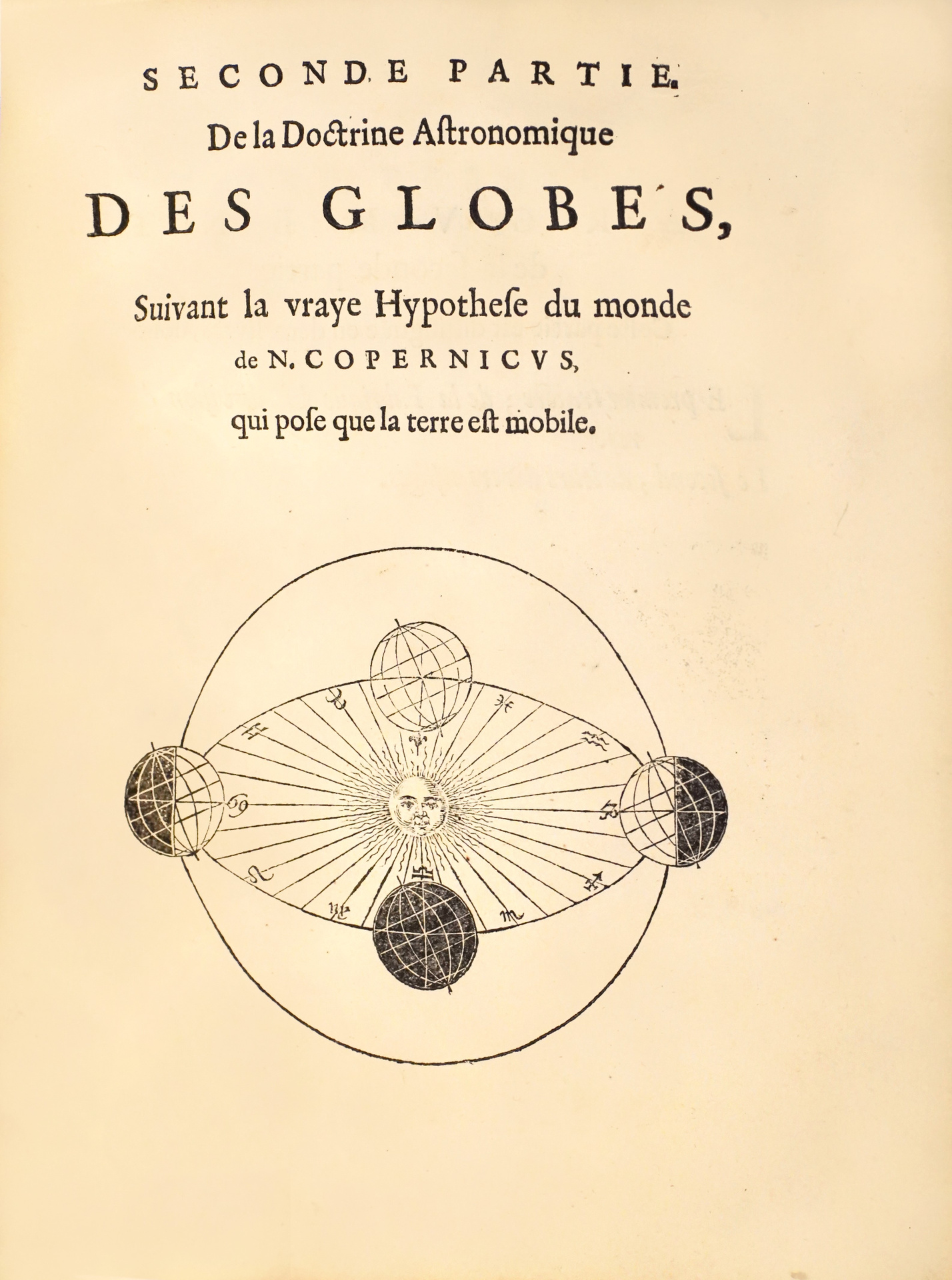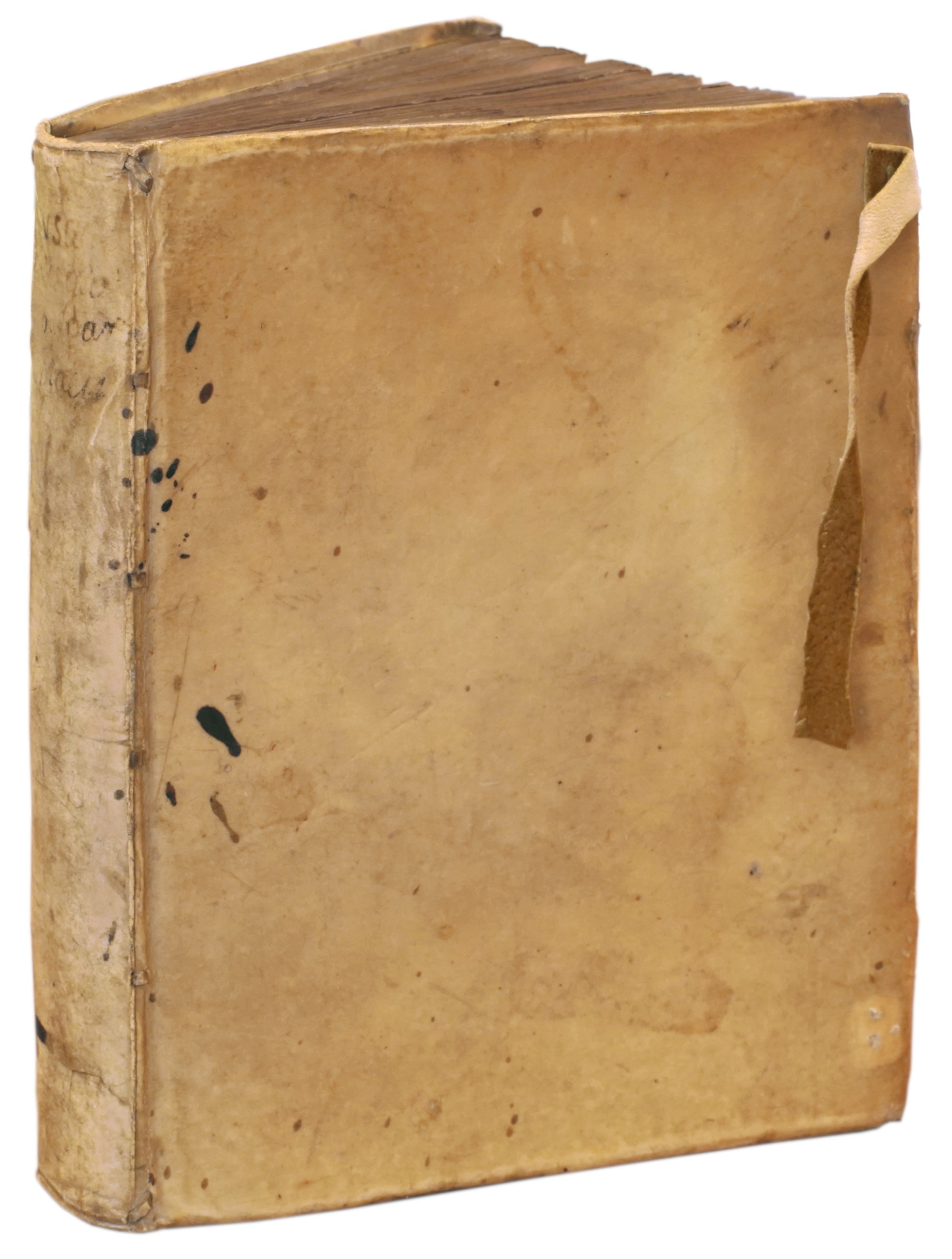Amsterdam, chez Jean & Corneille Blaeu, 1642.
In-4 de (9) ff., 277 pp., nombreux bois gravés dans le texte. Vélin à recouvrement, dos lisse avec le titre manuscrit, restes de lanières. Reliure de l’époque.
192 x 154 mm.
Rare édition originale française de ce traité sur l’utilisation des différents instruments d’astronomie.
Graesse, Trésor de livres rares, 435 ; Stevenson, Terrestrial and Celestial globes, p. 223.
L’édition originale fut publiée en hollandais en 1620 au format in-8.
L’ouvrage, publié par Jean et Corneille Blaeu, les fils de Guillaume Blaeu, est divisé en deux parties, la première se basant sur la théorie de Ptolémée, la seconde sur l’étude de Copernic, suivant en cela l’arrangement du Dialogo de Galilée.
On y trouve la manière de tracer les cadrans.
« The master globe-maker authored the ‘Institution Astronomique’ so that his customers might get the most out of his celestial and terrestrial globes. Blaeu gives a detailed explanation of the various parts of a globe, followed by a series of nearly 150 exercises. By positioning the terrestrial globe as Blaeu directs, it is a simple matter to determine the time in different parts of the world. There are exercises for both the celestial globe and the terrestrial globe.”
Willem Jansoon Blaeu (1571-1638), astronome et mathématicien hollandais, est célèbre pour avoir perfectionné la cartographie. Il fonda sa propre imprimerie à Amsterdam et put y publier ses travaux. Ses fils, Johan et Cornelis, poursuivirent son oeuvre.
« This work gave accounts of the opposing Ptolemaic and Copernican systems of the planets, as Blaeu thought the Ptolemaic system was still a useful introduction to the topic. Blaeu had worked on the island of Hven with Tycho Brahe and was a firm adherent to the Copernican system.
It should be remembered that Galileo was condemned for his Copernican stance just the previous year, but Blaeu, publishing his works in the Protestant Netherlands, was not subject to the prohibitions of the Roman Catholic authorities”.
La présente édition est illustrée de 34 bois gravés dans le texte, figures géométriques et astronomiques.
Précieux exemplaire d’une grande fraicheur de cet important ouvrage scientifique, conservé dans son authentique reliure en vélin à recouvrement de l’époque.
Provenance : ex-libris Samuel O. Hoffman et Pierre Duhem.
Pierre Duhem (1861-1916) était un physicien, chimiste, historien des sciences et épistémologue français.
